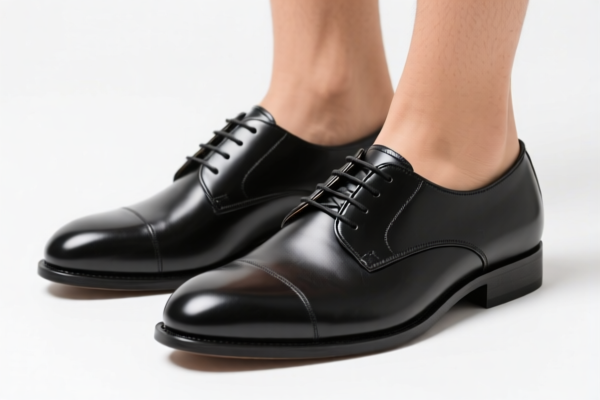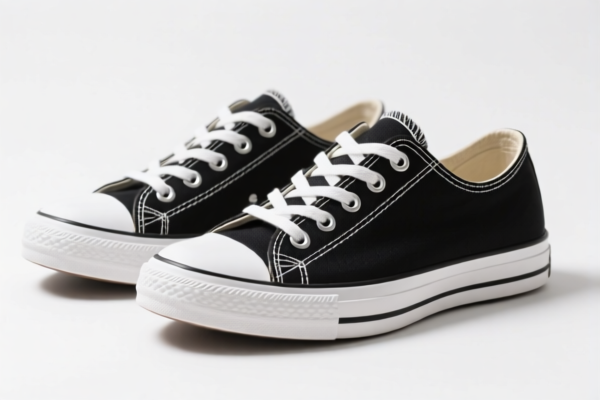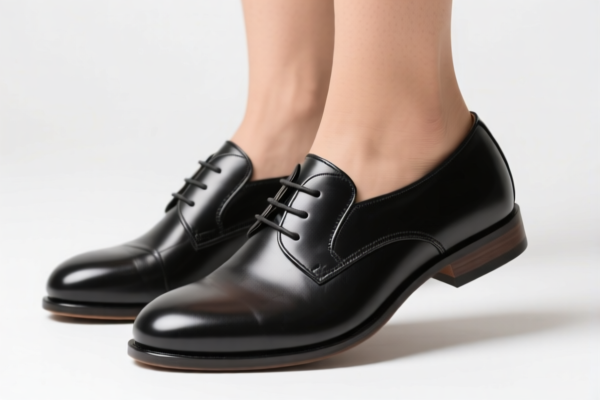| HS Code | Official Doc | Tariff Rate | Origin | Destination | Effective Date |
|---|---|---|---|---|---|
| 6401100000 | Doc | 75.0% | CN | US | 2025-05-12 |
| 6401929030 | Doc | 75.0% | CN | US | 2025-05-12 |
| 6403403030 | Doc | 35.0% | CN | US | 2025-05-12 |
| 6403919015 | Doc | 40.0% | CN | US | 2025-05-12 |
| 8308100000 | Doc | 1.1¢/kg + 2.9%+55.0% | CN | US | 2025-05-12 |
| 8308909000 | Doc | 57.7% | CN | US | 2025-05-12 |
| 7415100000 | Doc | 57.5% | CN | US | 2025-05-12 |
| 7415390000 | Doc | 58.0% | CN | US | 2025-05-12 |
| 3926201010 | Doc | 30.0% | CN | US | 2025-05-12 |




Foot Protection
Foot protection encompasses a range of items designed to safeguard the feet from various hazards encountered in diverse environments. These hazards include impacts, punctures, compression, chemical exposure, extreme temperatures, and slips.
Materials
Foot protection is constructed from a variety of materials, chosen based on the specific protection required:
- Leather: Offers abrasion resistance, flexibility, and comfort. Commonly used in work boots and some specialized footwear.
- Steel: Provides high impact and compression resistance, primarily in toe caps and midsoles.
- Composite (e.g., carbon fiber, Kevlar): Offers similar protection to steel but is lighter and does not conduct electricity or temperature, making it suitable for electrical work or airport security.
- Rubber: Provides slip resistance, water resistance, and electrical insulation. Used for outsoles, overshoes, and specialized boots.
- Plastics (e.g., PVC, polyurethane): Offers chemical resistance, flexibility, and waterproofing. Used in overshoes, safety boots, and specialized footwear.
- Textiles (e.g., nylon, polyester): Offers breathability, comfort, and flexibility. Often used in the upper portions of footwear, sometimes reinforced with other materials.
Purpose & Function
The primary purpose of foot protection is to prevent injuries. Specific functions include:
- Impact Protection: Absorbing energy from falling objects or collisions.
- Compression Protection: Protecting against crushing forces.
- Puncture Resistance: Preventing sharp objects from penetrating the sole.
- Electrical Hazard Protection: Insulating the wearer from electrical shock.
- Slip Resistance: Providing traction on various surfaces.
- Chemical Resistance: Protecting against corrosive or harmful substances.
- Temperature Protection: Insulating against extreme heat or cold.
- Water Resistance/Waterproofness: Keeping feet dry in wet conditions.
Usage Scenarios
Foot protection is crucial in a wide range of industries and activities:
- Construction: Protecting against falling objects, punctures, and compression.
- Manufacturing: Protecting against falling objects, sharp materials, and chemical spills.
- Healthcare: Protecting against biohazards, slips, and punctures.
- Mining: Protecting against falling rocks, sharp materials, and compression.
- Agriculture: Protecting against punctures, chemicals, and wet conditions.
- Electrical Work: Providing electrical insulation and impact protection.
- Hiking/Mountaineering: Providing support, traction, and protection from the elements.
- Everyday Wear: Safety shoes for general work environments, or specialized footwear for specific tasks.
Common Types
- Safety Boots: Typically leather or composite, with steel or composite toe caps, and often with puncture-resistant soles.
- Work Shoes: Lighter than boots, offering similar protection but with less ankle support.
- Steel-Toe Boots/Shoes: Feature a reinforced steel cap to protect the toes from impact and compression.
- Composite-Toe Boots/Shoes: Similar to steel-toe, but use composite materials for lighter weight and non-conductivity.
- Electrical Hazard (EH) Boots/Shoes: Designed to insulate the wearer from electrical shock.
- Waterproof Boots/Shoes: Constructed with waterproof materials or coatings to keep feet dry.
- Slip-Resistant Shoes/Boots: Feature outsoles with specialized treads for improved traction.
- Overshoes/Boot Covers: Provide temporary protection against wet, dirty, or hazardous conditions.
- Specialty Boots/Shoes: Designed for specific tasks, such as chemical handling, welding, or hiking.
- Clogs and Mules: Often used in healthcare and food service, offering comfort and ease of cleaning, sometimes with safety features.
Foot protection encompasses a range of products designed to safeguard feet from various hazards. Based on the provided information, several HS codes may be relevant depending on the specific characteristics of the foot protection.
Here are the qualifying HS codes:
- 6401100000: This code covers waterproof footwear with outer soles and uppers of rubber or plastics, where the uppers are neither fixed to the sole nor assembled by stitching, riveting, nailing, screwing, plugging or similar processes, and incorporates a protective metal toe-cap. The total tax rate is 75.0%, comprised of a 37.5% base tariff, a 7.5% additional tariff, and a 30.0% additional tariff effective after April 2, 2025.
- 6401929030: This code applies to waterproof footwear with outer soles and uppers of rubber or plastics, where the uppers are neither fixed to the sole nor assembled by stitching, riveting, nailing, screwing, plugging or similar processes. Specifically, it covers other footwear covering the ankle but not the knee, and is categorized as work footwear. The total tax rate is 75.0%, comprised of a 37.5% base tariff, a 7.5% additional tariff, and a 30.0% additional tariff effective after April 2, 2025.
- 6403403030: This code is for footwear with outer soles of rubber, plastics, leather or composition leather and uppers of leather, incorporating a protective metal toe-cap, and specifically welt footwear with pigskin uppers. The total tax rate is 35.0%, comprised of a 5.0% base tariff and a 30.0% additional tariff effective after April 2, 2025.
- 6403919015: This code applies to footwear with outer soles of rubber, plastics, leather or composition leather and uppers of leather, categorized as other footwear covering the ankle, and is further specified as work footwear for other persons. The total tax rate is 40.0%, comprised of a 10.0% base tariff and a 30.0% additional tariff effective after April 2, 2025.
- 7415100000: This code covers nails, tacks, drawing pins, staples (other than those of heading 8305) and similar articles, of copper or of iron or steel with heads of copper. The total tax rate is 57.5%, comprised of a 2.5% base tariff and a 30.0% additional tariff effective after April 2, 2025.
- 7415390000: This code applies to nails, tacks, drawing pins, staples (other than those of heading 8305) and similar articles, of copper or of iron or steel with heads of copper, categorized as other threaded articles. The total tax rate is 58.0%, comprised of a 3.0% base tariff and a 30.0% additional tariff effective after April 2, 2025.
It is important to note that the correct HS code will depend on the specific materials, construction methods, and intended use of the foot protection.
Customer Reviews
No reviews yet.